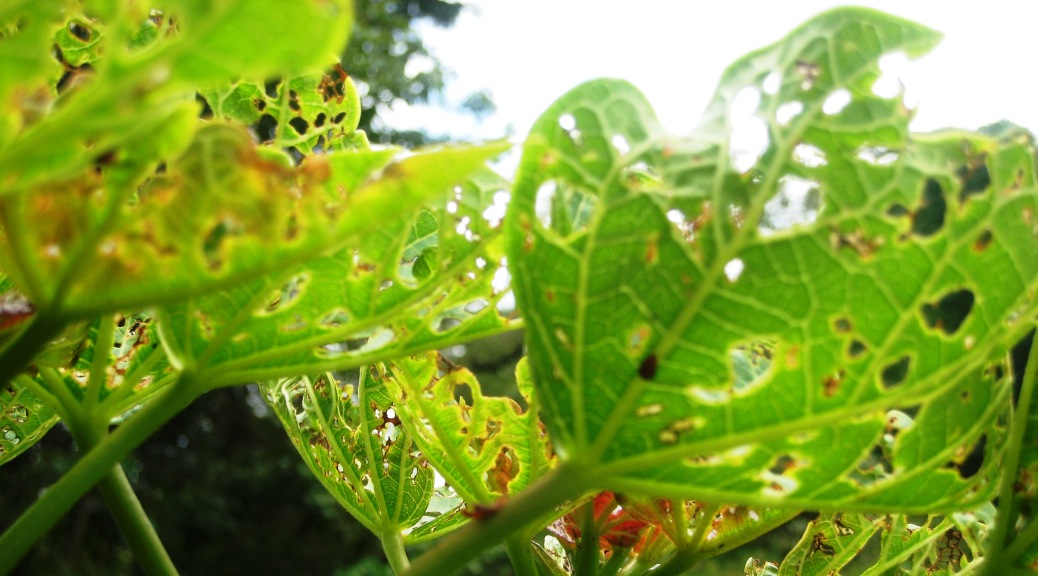NOTE: THE USE OF ANY RECOMMENDED TREATMENT ON THIS PAGE IS ON USERS OWN RISK AND SHOULD BE ALLOWED FOLLOWING LOCAL LAW AND REGISTRATION.
| Picture | Symptoms | Treatment |
|---|---|---|
| Polyphagotarsonemus latus
Spider mites
|
Young plants get very thick and sturdy leaves with veins almost on top of the leaf surface. Growing points will dry and the plant stops growing until a new flush starts, provoked by rain or irrigation. It is a typical disease of nursery plants and recently planted plantations. | If single plants are being attacked, cut the infested part and burn it. Larger area’s can be treated with:
Avermectin1.9EC@0.5ml/l,Dicofol 18.5% EC @ 3ml/lt Vertimec 1.9 EC @ 0.5ml/lt |
| Oidium ssp.
Powdery Mildew
|
White powdery fungus mainly on younger leaves and stems. Most Jatropha,s get this disease in area’s with low average temperatures and relatively high humidity.
|
Products based on dithiocarbamate (Zineb, Dithane, Manzate etc.) |

Fusarium- Wilt |
Fusarium-Wilt
Young and fully grown plants collapse in a very short time as if they do not get water. Indeed they do not get water, because the vascular system blocked by the fungus. The disease spreads from one plant to another , sometimes trough flood and open channel irrigation. |
Soil fumigation or drenching with Bavistin?, 0.2% COC, Bordeaux drenching ,
Dithane, Kitazin |
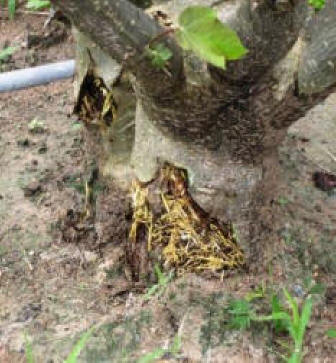
Macrophomia spp |
Collar rot
Mainly associated with drip irrigation. Usually caused by over-irrigating or high groundwater table. The plant tries to recover by making new roots in the rotted area. Farmers use to cover these area’s with soil, in order to stimulate secondary root growth. |
Improve growing conditions , better drainage, plant on ridges. decrease irrigation |
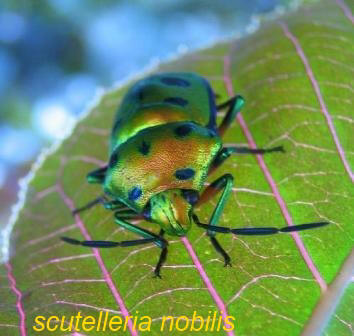 |
Sucks on fruits , diminishing yield | Cypermethrin.
Do not use during flowering, because it is highly toxic to bees. |
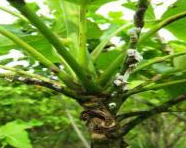
Ferrisia virgata-Mealy bug |
Sucks the sap from leaves and stems, sometimes from fruits if heavily infested and causes crinkling leaves, dry stems and reduced reproductive parts. | Chlorpyrifos or Mercaptothion, Dimethoate.
Malathion 50% |
 |
Giant African snail
Feeds on leaves and stem, mainly in the nursery |
Course sand around the nursery beds keeps them out. |
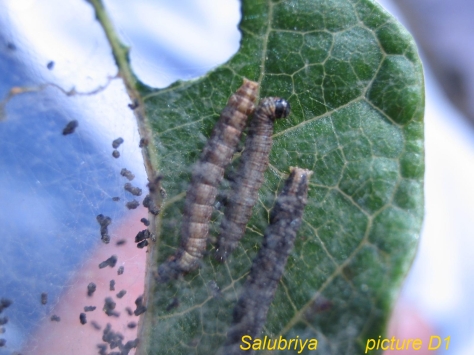 |
Physical damage, mainly on leaves but feeds on fruits as well
Salubriya–Leaf webber |
Bacillus thuringiensis sub sp. Kurstaki. Can generally be used against all types of caterpillars
Endosulfan |
 |
Physical damage, mainly on leaves
Leaf miner |
Bacillus thuringiensis sub sp. Kurstaki |

Aphtonia dilutipes |
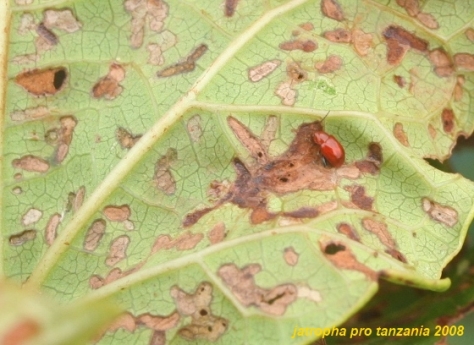
Leaf damage |
Flea beetle damages the leaves and fruits, their larva’s damage the roots. Cypermethrin, Imidacloprid. Higlhy toxic for bees |
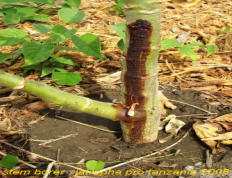
Stem borer |
There are several reports on stem borer damage in Jatropha. However, it looks like it only occurs on heavy soils and most of the time there is a lot of ant activity as well.This is a strong indication that growth conditions are not optimal. | Older plants usually survive the disease, but younger plants may break trough wind or mechanical damage. (picking).
Chemical control has been reported. (carbofuran) |
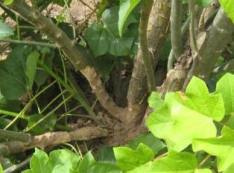
Termite damage |
Termite damage occurs mainly on soils very low in organic matter content (laterite red soils, sand) The termites attack Jatropha on the base, causing plant damage and total loss. | How to control termite damage to trees with Neem leaf tea (Azadirachta indica). A barrel or bucket is filled with green Neem leaves. Then cover the leaves with water and after 4 days use the liquid against termites; it does not kill them but they stop feeding and they finally starve to death. |
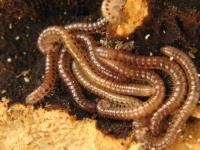
Julus spp.-Millipedes |
Most millipedes eat decaying leaves and other dead plant matter, moisturising the food with secretions and then scraping it in with the jaws. This is a typical Jatropha nursery pest and can cause total loss. | Prevention. Keep the nursery area clean. Millipedes feed on rubbish, For smaller area’s it is sufficient to surround your seedbeds with dry sand or wood ash, to prevent them from entering. Cypermethrin for larger infestations. |
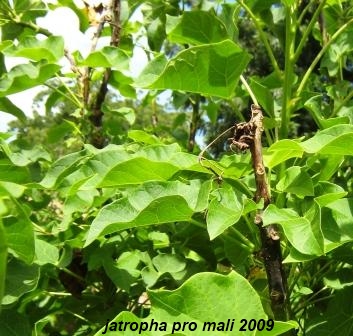
Lasiodiplodia spp Colletotrichum ssp |
Die back cancer and or Antrachnosis. Young shoots and branches showing brown spots, blocking sap flow. Branches die off. | There is no better treatment than cut and burn.
Copper based treatments might help as a preservative after pruning |

